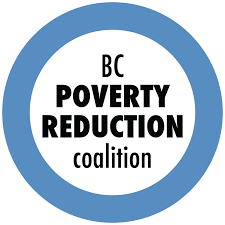OP/ED: B.C.’s first ever Poverty Reduction Plan tracks strong start with comprehensive approach but gaps need to be filled moving forward
The B.C. Poverty Reduction Coalition (BCPRC) congratulates the provincial government for launching the first ever poverty reduction plan for B.C.: TogetherBC. After a decade of advocacy, B.C. is no longer the only province without a poverty reduction strategy. The BCPRC welcomes the strong start outlined in the plan tracking previous investments and those featured in this year’s budget, and looks forward to building on this to ensure that no-one is left behind.
The poverty reduction plan includes many important features, in particular:
- Comprehensive framework with cross-ministry responsibilities and investments
- Foundation in reconciliation
- Gender-based plus analysis as a lens (GBA+), which ensures policy and practice will be evaluated by its impact on sex and gender, and also other factors including race, disability, and income
- Measures to reduce and prevent poverty
“These pieces have long been recognized by the BCPRC as critical for a strong foundation to a poverty reduction plan, so it’s good to have them reflected here,” says Trish Garner, Community Organizer of the BC Poverty Reduction Coalition. “To tackle the breadth of poverty in BC, we need a comprehensive framework and we do see that here with the inclusion of housing, child care, education, employment, health, transportation, access to justice and food security. The GBA+ approach also applies an equity lens that ensures consideration of the most marginalized people in poverty underlies these measures.”
Gaps identified in the conclusion of the report launched today, TogetherBC: British Columbia’s Poverty Reduction Strategy, include “better access to good food for families, enhanced investments in affordable transportation, and improved income security, including assistance rates.” These were named as priorities in the province-wide consultation process but have not yet been met by TogetherBC.
“These gaps urgently need to be filled moving forward, and those next steps are missing here. While the Child Opportunity Benefit will come in Fall 2020, and make a significant difference for children and families in poverty, we don’t have a sense of other concrete pieces of the plan over its lifetime over the next 5 years,” highlights Garner. “Increasing income assistance rates far beyond the recent $50 announcement is critical, and tied to that, we must re-implement vacancy control to ensure those increases are going to the people we want to benefit. This is an issue of human rights for those people in the deepest poverty in B.C.”
The poverty reduction plan signals a change in culture at the Ministry of Social Development and Poverty Reduction to a more supportive income assistance system, including specific policy changes:
- Ending early CPP so people are no longer forced to access their pension at age 60
- Reducing the 5 week work search requirement back to 3 weeks
- Changing the definition of spouse to apply to couples living together for 1 year, instead of 3 months
- Removing the limit of housing deposits that people can access to make it easier to move if necessary, and implementing a new pet deposit
- Ensuring homeless people can access the same support supplements as those with a fixed address
- Higher asset limits and allowing people to keep their vehicles
- Streamlining application process for returning clients to provide safety net for those attempting to transition off income assistance
- Expanding access to Persons with Persistent and Multiple Barriers Program, including allowing access for people with addictions
TogetherBC outlines many reasons to reduce poverty in B.C. “Because it’s the right thing to do. Because we care about our neighbours. Because we care about the kind of world we want to leave behind for our children. And there are costs to inaction…costs that stretch across the system – from health care to policing to social services.”
The B.C. Poverty Reduction Coalition was founded on these values, both social and economic, and looks forward to realizing them. Building on the comprehensive framework provided in TogetherBC, we will continue to advocate for the necessary measures to ensure that no-one is left behind in British Columbia moving forward.






















